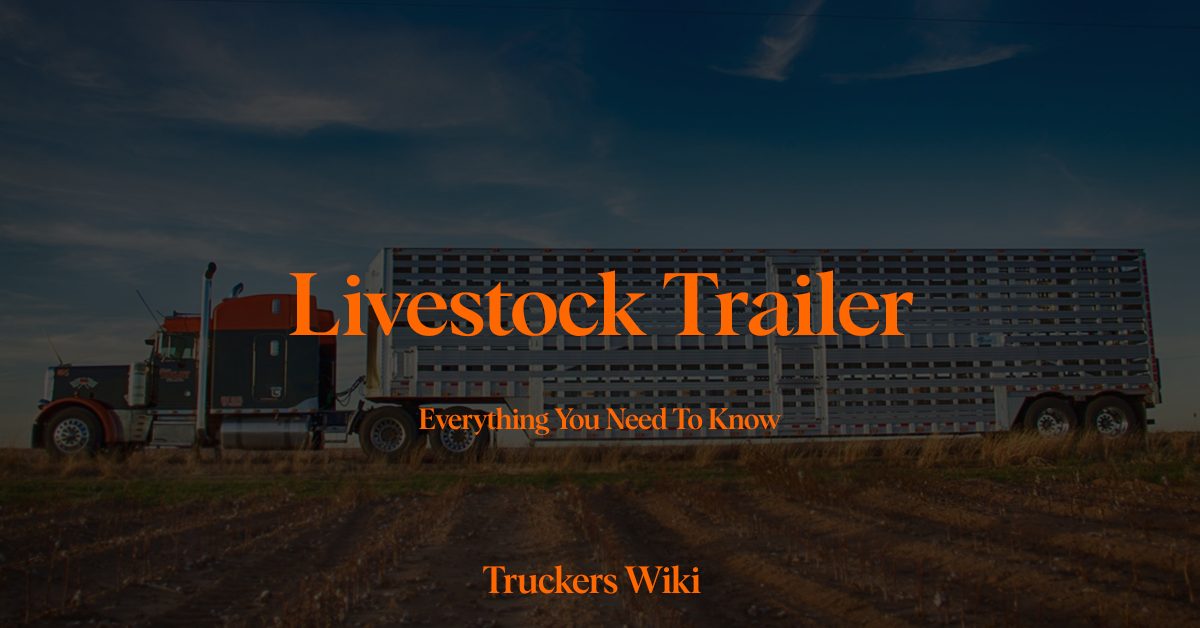
Table of Contents
Introduction to Livestock Trailers
Livestock trailers, also known as stock trailers, play a pivotal role in the agriculture industry. They are specifically designed for transporting animals such as cattle, horses, sheep, pigs, and other livestock from farms to markets, slaughterhouses, or other farms. These trailers provide a secure and controlled environment that ensures the safety and welfare of the animals during transit.
Design and Types of Livestock Trailers
Livestock trailers are characterized by their robust construction and well-ventilated design. They come in different sizes and configurations to accommodate various types and quantities of animals. Most trailers have one or more compartments and gates, allowing for the separation of different groups of animals, which can help to reduce stress and prevent injury.
There are two main types of livestock trailers: bumper pull and gooseneck.
Bumper Pull Trailers: These trailers are smaller and are connected to the towing vehicle through a hitch on the rear bumper. They are generally easier to maneuver and are suitable for smaller livestock loads.
Gooseneck Trailers: These trailers attach to a hitch inside the bed of a pickup truck and offer better stability, especially for larger loads. They tend to have more room and can accommodate more animals, making them ideal for transporting larger herds.
Operational Considerations
Transporting livestock comes with a unique set of challenges, making it crucial for those operating these trailers to have specialized knowledge and skills.
Animal Welfare: Drivers must ensure the animals’ welfare throughout the journey, taking into account factors like temperature, the need for rest stops (for longer journeys), and appropriate loading densities to avoid overcrowding.
Loading and Unloading: Careful consideration must be given to the loading and unloading process. Animals should be moved calmly and gently to reduce stress and prevent injury.
Hygiene: Livestock trailers must be thoroughly cleaned and disinfected after each use to maintain hygiene standards and prevent the spread of disease.
Driving Skills: Due to the living nature of the cargo, drivers need to exhibit smooth and considerate driving behaviors. Rapid acceleration, hard braking, or sharp turns can distress the animals and increase the risk of injury.
Licensing and Regulations
Operating a livestock trailer requires adherence to various rules and regulations. In most cases, if the Gross Vehicle Weight Rating (GVWR) of the truck and trailer combined exceeds 26,001 pounds, the driver will need a Commercial Driver’s License (CDL).
In addition to this, there are numerous animal welfare regulations that govern the transportation of livestock. For instance, in the United States, the Animal and Plant Health Inspection Service (APHIS) provides guidelines for the transportation of livestock, and various states have their own specific laws.
Click here to visit USDA APHIS website.
Conclusion
Livestock trailers are essential for the transportation of animals in the agricultural sector. Despite the challenges it presents, with the right equipment, knowledge, and skills, the operation of livestock trailers can ensure the safe and humane transportation of animals. As always, strict adherence to local and national regulations is crucial to ensure the welfare of the animals and the legality of the operation.
To learn more about the types of trailers used in the trucking industry click here.
Listen to The Article Here
Audio Article Livestock Livestock Trailer trailer what is
Last modified: June 3, 2023

